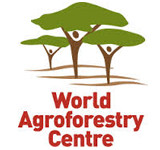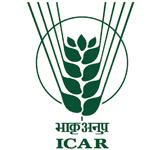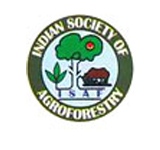
Vigyan Bhavan & Kempinski Ambience
10 - 14 February 2014
Delhi, India
blog

Teak in a landscape in Sumbawa, West Nusa Tenggara
In Java and Nusa Tenggara, Indonesia, farmers rely heavily on commodities, timber and fruits to make a living. They grow teak, mahogany, coffee, candle nut, ginger, mango, and bamboo expecting to generate income to pay the bills. Yet according to a study by Muktasam Abdurrahman from Mataram University in Indonesia, the unclear marketing strategy for timber and non-timber forest products (NTFPs) has resulted in low benefit margins for farmers.
“We found that farmers are lacking knowledge, particularly on production and marketing systems of timber and NTFPs,” said Abdurrahman at a session of the World Congress on Agroforestry. “For example they plant teak without knowing the criteria of high quality teak. They also rarely practice thinning and pruning of the trees, so they lose their chance to maximize production.”
“Farmers are weakly connected to the market, and since they also have very narrow market information, they apply very limited value-adding activities,” he added.
The paper, which shares preliminary findings and lessons learnt from an on-going project by the World Agroforestry Centre (ICRAF), gathered data through surveys, scoping studies and group discussions in six villages in Gunung Kidul (Central Java), Sumbawa (West Nusa Tenggara) and Mutis (East Nusa Tenggara).
Abdurrahman stated that one of biggest challenge he found for timber species, particularly in Sumbawa, West Nusa Tenggara, comes from local bylaws preventing the community from selling timber products from uncertified lands. Problems arise when many farmers do not have land certificates, making it tricky for them to sell their timber.
“Some farmers even say that selling their timber products feels like stealing from their own land,” said Abdurrahman.
In 2012 the government of Indonesia passed a regulation that deregulated the local bylaws, but regrettably the district agency still enforces them, which disadvantages farmers.
The study’s co-author, Syafrudin Syafi’i, highlighted the honey value chain as a successful model that could to be applied in NTFPs such as the ginger and turmeric grown in the study areas.
Honey marketing in Sumbawa is done through collective action, managed by a network that collects and distributes the honey to buyers. “It is ideal to replicate this model to other NTFPs as a marketing strategy, but further assessment is required,” Syafi’i said.
Moreover, as part of solutions to establish a marketing strategy, Abdurrahman recommends interventions such as capacity building for farmers that concentrates on improving knowledge about marketing access, market characteristics, production techniques of timber and NTFPs, as well as resolving the local bylaw issue.
“On top of that, it is necessary to educate farmers to optimize species seasonal calendar,” says Abdurrahman. “This will help them design an agroforestry system that provides sustainable income throughout the year.”
By Enggar Paramita
—
Find the abstract of the study here:
Related story:
Unity is strength in the marketing of smallholder farm produce
—
Follow the Congress on Twitter #WCA2014 for live updates!





